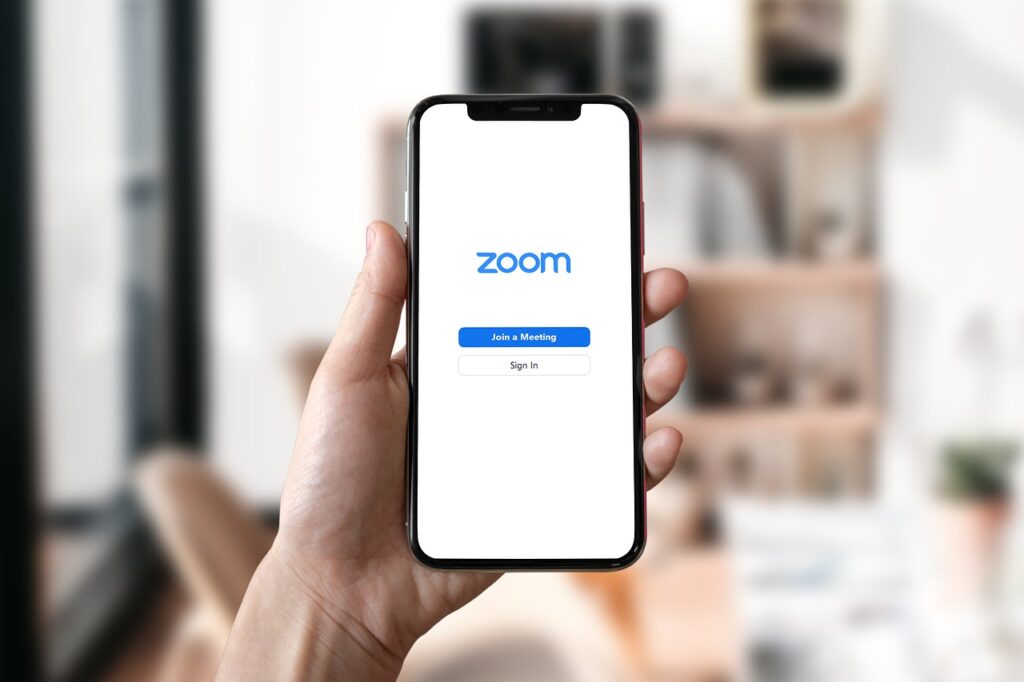Ever wonder why some people say “communication” while others talk about “communications”? It’s not just wordplay! Next to your business planning and lead generation, communication and communications are arguably the next most important to your business.
So, just what is communication and how does it differ from communications?
The subtle yet crucial differences between these two terms and how each one shapes your interactions in the digital age are vital. Our latest article uncovers why these distinctions matter and how mastering both can elevate you to greater heights.
Whether you’re an entrepreneur, professional or a curious learner seeking clarity, discover how unravelling this linguistic puzzle in the context of virtual communications platforms and tools will transform your personal, professional and business life.
2. What is Communication?
Communication is often seen as primarily about how messages are understood and made sense of. At its most basic, communication is about creating meaningful connections with others in the everyday use of language. In this respect, communication is achieved through the systematic use and interpretable exchange of messages using shared speech signs and symbols.
The best form of communication is in person or face-to-face conversations. That’s because in-person communication enables the enhancement of clarity and understanding.
However, aside from being verbal, communication allows and encompasses nonverbal messaging such as writing or body language.
In the absence of in-person or face-to-face communication, the next best form of communication is documentation. Documents, either formal or informal, come in the form of business documents or informal letters, respectively. Business documents such as policies, contracts, memoranda, forms and minutes, provide essential information to employees, managers, and executives.
Over the years, the era of face-to-face communication and documentation has been overtaken by technology, to emerge as communications.

3. The Rise and Rise of Communications
Thanks largely to the development of technology and specifically the internet, communications refer to the technological distribution of messages (communication) through such things as radio transmissions, telephone, radio, TV and, most recently, the world wide web, the internet.
Before the Internet, telephone calls constituted businesses’ primary communications tool for direct communication. However, with the coming of cell phone technology, telephones or landlines as they are sometimes called, have largely been replaced by either regular cell phones or smartphones.
While not necessarily edging out cell phones, since the arrival of the internet and the development of electronic mail or email, emails have arguably become businesses’ best communications tool.
Email is today one of the fastest and most efficient communications tools for communication and conveying information. Apart from its speed and efficiency, email has also come to be relied on for sharing attachments and communicating with millions of recipients.
4. Social Media Platforms
Social media platforms allow users to create and share content, as well as participate in social networking. The most popular social media platforms include Facebook, YouTube, Instagram, TikTok, Snapchat, Twitter, Pinterest, Reddit, LinkedIn, and most recently, Threads. Each platform has its unique features and communications tools that allow users to connect with others, share content, and engage with their audience.
Aside from the platforms themselves, there are also many tools available to help businesses and individuals manage their social media presence. These social media management tools can help with tasks such as scheduling posts, analyzing performance, and engaging with followers.
Some of the top social media management tools include Sprout Social, Zoho Social, HubSpot, Sendible, Pallyy, SocialPilot, Buffer, Keyhole, Sprinklr, eClincher, Tailwind, Tweetdeck, Preview, PromoRepublic, Hootsuite, Coschedule, MeetEdgar, and Later-To name but a few.
In business, social media is used for brand awareness, customer engagement, and internal announcements. Overall, social media platforms and their tools offer a wide range of opportunities for businesses and individuals to connect with others, share content, and engage with their audience.

5. Communication and Chat Tools
- Instant Messaging Tools
Originally available as a Short Messaging Service (SMS) on cell phones, the coming of social media brought with it and led to instant messaging communications platforms. Currently, there are many communication and chat tools available. Largely known as instant messaging platforms like Facebook’s Messenger, Meta’s Whatsapp, Viber, and Telegraph.
From Facebook’s Messenger and Meta’s Whatsapp to Viber and Telegraph, instant messaging platforms today arguably form the easiest, fastest and most usefully convenient communications tools for business.
Unlike email, instant messaging platforms are invaluable to real-time communication between two people, teams and across departments. One such instant messaging platform is Slack.
- Slack
This messaging platform for team communication is also considered a productivity platform. Slack integrates your tools, automates tasks, and enables flexible communication with channels for different topics and direct messaging capabilities. With Slack, you can chat, huddle, and collaborate in channels with your team, whether you’re remote, hybrid, or in the office.
Slack is designed to be faster, better organized, and more secure than email.
6. Videoconferencing
Body language in business is vital. For this reason, face-to-face communication is sometimes more desirable than the communication itself. Thanks to the development of videoconferencing tools, this is now possible.
Today, several videoconferencing platforms have video functionality that enables participants on a call to be seen by others. Such platforms include:
- Butter
Though relatively unknown to the videoconferencing market, Butter, has from my experience, proved an excellent videoconferencing tool. True to its name, Butter allows you to effortlessly run more engaging online video sessions. Its comprehensive structure enables you to host energetic workshops, trainings, and interactive sessions.
With Butter, you can plan, run and recap your sessions in one tool, which often results in more engagement and participation. In addition, Butter allows you to connect to Miro or Mural while running brainstorming sessions, design sprints, and retrospectives.
Go on, give Butter a try for your next remote collaboration, meeting or presentation.
- Zoom
Somewhat like Butter, Zoom is also a video conferencing platform that offers a range of collaboration tools. These include video meetings, team chat, VoIP phone, webinars, whiteboards, contact centres, breakout rooms, events, and screen-sharing capabilities. It’s widely used for remote meetings and training sessions.
Lately, Zoom also offers AI Companion, which is included at no additional cost, to streamline communication, increase employee engagement, and improve productivity. Since the early 2020s COVID-19, Zoom has been used by businesses, organizations, and individuals to communicate and collaborate across locations and devices.

- Microsoft Teams
Often mentioned in the same breath as Zoom, Microsoft Teams is another videoconferencing platform that COVID-19 lockdowns popularised. MT as it’s sometimes called, integrates with Microsoft Office applications, provides video conferencing, and allows for document collaboration during sessions.
Butter, Zoom and Microsoft Teams allow for breakout room creation that enables smaller group discussions during videoconferencing sessions.
- Google Meet
Also rising in relative popularity since COVID-19 is Google Meet. As part of Google’s G Suite, Google Meet facilitates video meetings, screen sharing, and collaboration on Google Docs. What gives it an edge over Zoom as a videoconferencing tool, is the fact its free package lasts 15 minutes longer than Zoom’s.
7. Webinar Platforms

Although it is not unheard of to use videoconferencing tools like Zoom to host a webinar, perhaps unknown to some is that webinar-specific platforms exist. These include:
- GoToWebinar
As its name suggests, this is a platform for hosting and attending webinars and online events. It offers a variety of features like polls, Q&A, customizable modes, interactive features, insightful analytics, and powerful integrations. GoToWebinar is designed to be easy to use, with a simple setup process and no need for IT support.
The beauty of GoToWebinar, however, is that you can host events for up to 3,000 attendees. In addition, the platform offers enterprise-grade security to keep everyone’s data safe.
Above all, attendees can join your webinar for free and do not need an account to attend sessions.
- WebEx Events
Developed by Cisco, this platform is also used for hosting virtual events, webinars, as well as online training sessions. WebEx is designed to host large-scale online events, including virtual conferences, town halls, and more. It caters to businesses and organizations that engage with large audiences, offering tools to manage and deliver engaging, interactive experiences.
Apart from platforms, there are also virtual tools, which though integrated into platforms, can also be found as both standalone tools, and at times platforms.
8. Screen Recording and Sharing Tools
- Loom
This video messaging tool allows you to record and share your screen, making it useful for tutorials and explanations. Doing so helps you get your message across through instantly shareable videos. With Loom, you can record your camera, microphone, and desktop screen simultaneously.
Your video is then instantly available to share through Loom’s patented technology. In addition, Loom lets you record and share AI-powered video messages with your teammates and customers. You can edit, embed, and collaborate over video with features like transcripts, captions, tasks, and more.
- Camtasia
If it is a screen recording and video editing tool you are after, then, Camtasia is for you. Ideal for creating instructional videos, Camtasia comes with powerful video editing software published by TechSmith. It is designed for creating and recording video tutorials and presentations via screencast or a direct recording plug-in to Microsoft PowerPoint.
Camtasia offers a range of features for creating, editing, and sharing videos online. These include screen recording, camera capture, microphone and system audio capture, and intuitive editing tools.
In business, Camtasia’s software is used by many creators for marketing and sales, internal training, customer success, virtual or in-person learning, demos, social media, and more.
9. Online Collaboration & Document Sharing Tools

- Google Workspace
Formerly G Suite, Google Workspace is a suite of secure online productivity and collaboration tools developed by Google. It includes popular applications such as Gmail, Calendar, Drive, Meet, and more, all designed to help teams work together more efficiently. The suite also includes online collaborative tools for creating and editing documents, spreadsheets, and presentations, such as Google Docs, Sheets, and Slides.
These tools allow for real-time collaboration and easy sharing, making it simple for teams to work together on projects, even if they are not in the same location.
- Microsoft 365
Like Google Workspace, Microsoft 365 also offers collaboration tools like Word, Excel, and PowerPoint with real-time co-authoring capabilities.
10. Virtual Whiteboards
- Miro
Miro is a visual workspace for innovation where teams can manage projects, design products, and build the future together. That’s because this collaborative online whiteboard platform allows participants to brainstorm, diagram, and collaborate in real time. It is used by over 70 million users worldwide and offers tools for creative brainstorming and collaboration, including process mapping, retrospectives, mind mapping, scaled product planning, whiteboarding, technical diagramming, customer journey mapping, wireframing, and strategy and planning.
Miro is used by more than 180,000 organizations, including Nike, Ikea, Deloitte, WPP, and Cisco, to help improve the speed and quality of their work.
- Microsoft Whiteboard
A part of Microsoft 365, Microsoft Whiteboard is a digital canvas that allows you to brainstorm, collaborate, and create with others. You can draw, write, erase, and add images, stickers, and notes on a shared board. It is designed for use with pen, touch, and keyboard input.
You can also use Whiteboard in Microsoft Teams or on Surface Hub devices. Whiteboard is available for Windows, iPhone, and iPad. You’ll need a free Microsoft account or a paid M365/O365 subscription to use it.
There’s also a web version you can use to create simple whiteboards or view those shared, but it’s not nearly as functional as the app.
11. Collaborative Notetaking
- Evernote
Over the years, Evernote has gone grown in acclaim. It allows participants to take collaborative notes during sessions, which can be synchronized in real time. As such, Evernote is a note-taking and task-management application developed by the Evernote Corporation. It is intended for archiving and creating notes with embedded photos, audio, and saved web content. Notes are stored in virtual “notebooks” and can be tagged, annotated, edited, searched, and exported.
Evernote is a powerful tool able to help executives, entrepreneurs and creative people capture and arrange their ideas. It offers features such as Web Clipper, AI-powered Search, and Real-Time Editing. Evernote is available for download on multiple platforms including Windows, Mac, iOS, and Android.
- OneNote
Often confused with Evernote, OneNote is part of Microsoft 365. It provides a collaborative space for note-taking and information sharing. OneNote is a digital note-taking app from Microsoft.
It allows you to capture your ideas and to-do lists in one place, across all your devices. You can type, write, or draw with the freeform feel of pen to paper, and search and clip from the web to picture ideas. OneNote also offers collaboration features, so that you can work on ideas with others in real time.
Great news! OneNote is available for free on your tablet, phone, and computer, and works on any device or platform.
Wrap Up
No matter the nature or size of your business, choose a combination of the platforms and tools above, for specific aspects of your business. This can be your training needs, the size of your audience, and/or your preferred workflow. Additionally, always ensure that both you and your participants are familiar with the platforms and tools you select to use in your business, if they are to effectively impact both it and you’re your bottom line.
Corwin L. Mhlahlo is, among others, the Principal Communications and Strategic Solutions Consultant at Comecinc C & SSS Inc., – a business consulting firm in Johannesburg, South Africa. His qualifications include certifications in Business Administration, Sales Marketing Management and Digital Marketing. Corwin is passionate and excited about the future of Artificial Intelligence and Software as a Service (SaaS) to business processes, operations and productivity.
Disclosure: This article contains affiliate links. I may earn commissions (at no cost to you) if you purchase a service through any of the links in this post. Thank you!!
